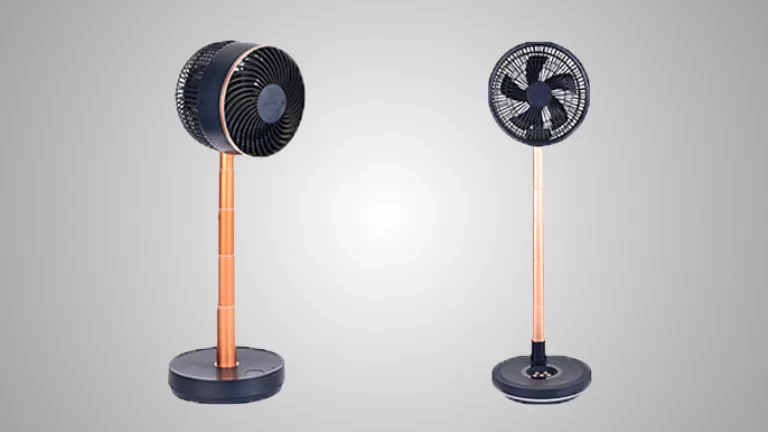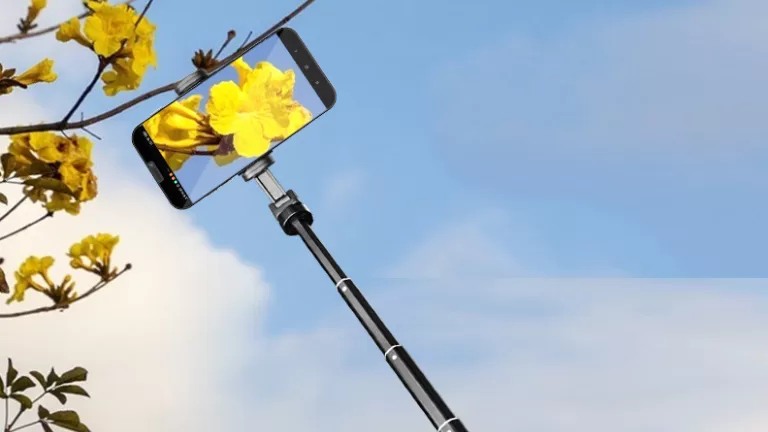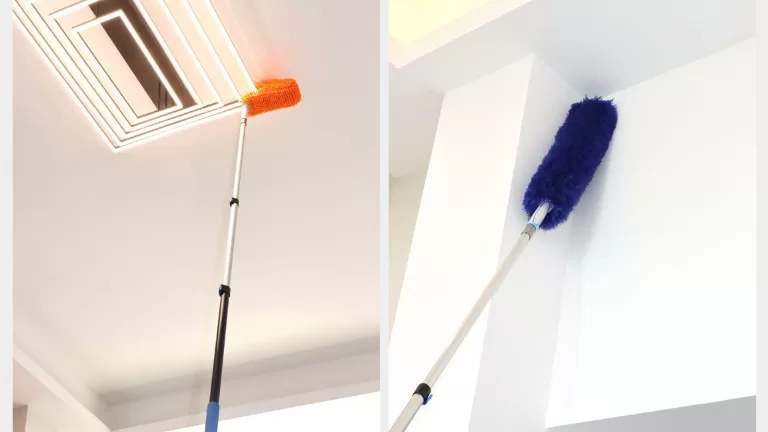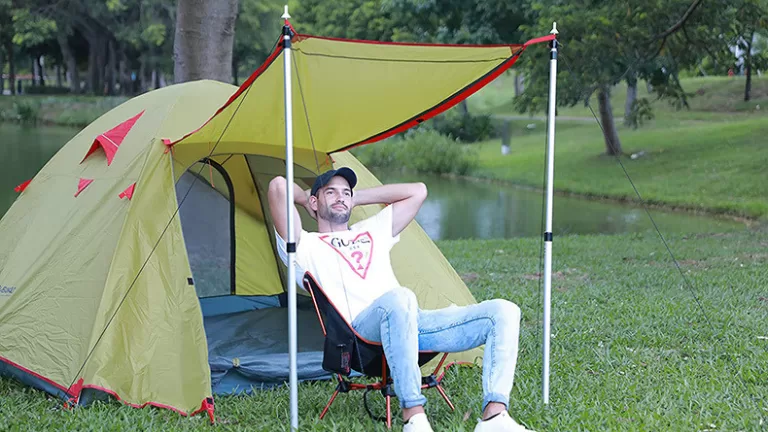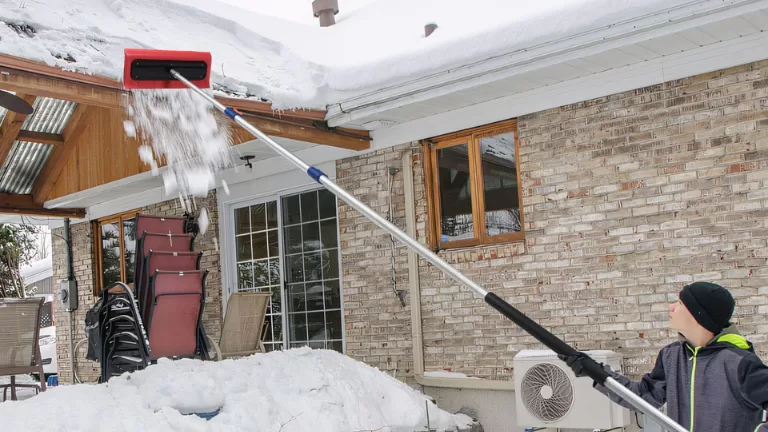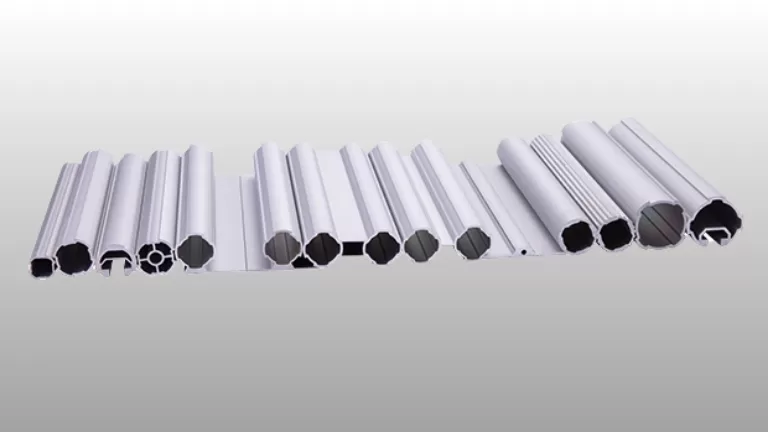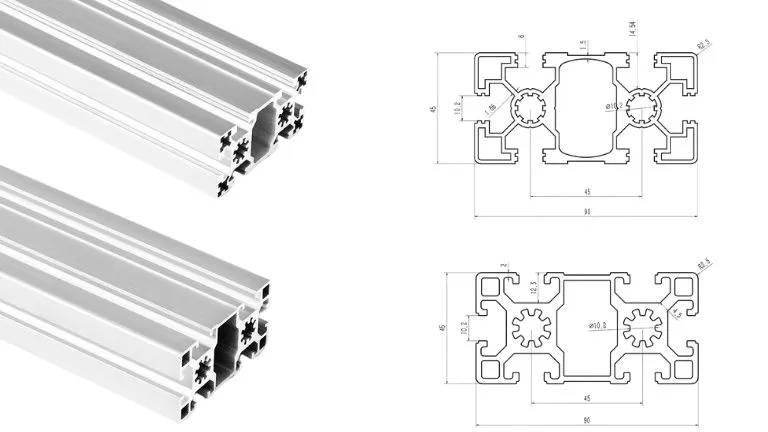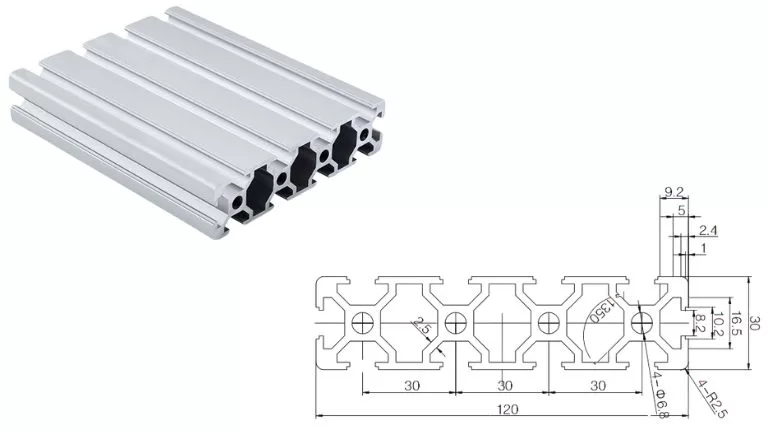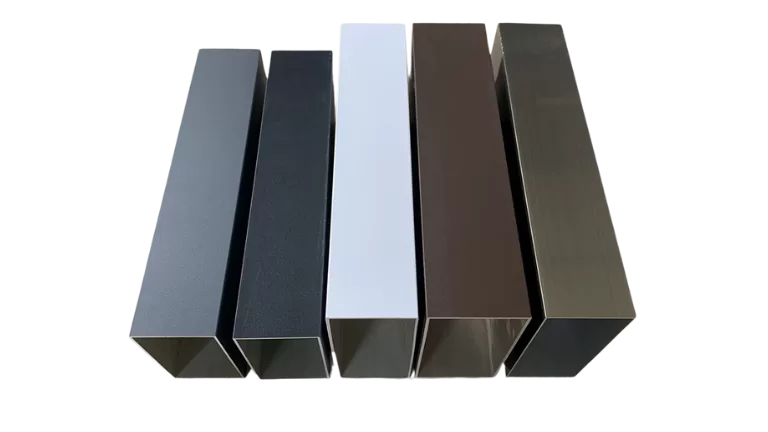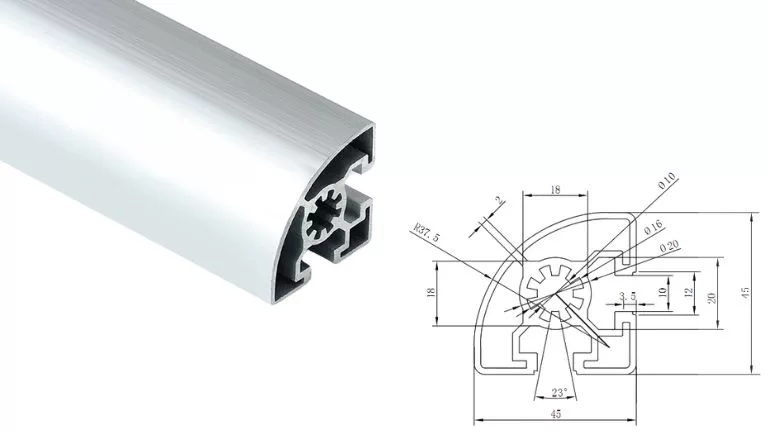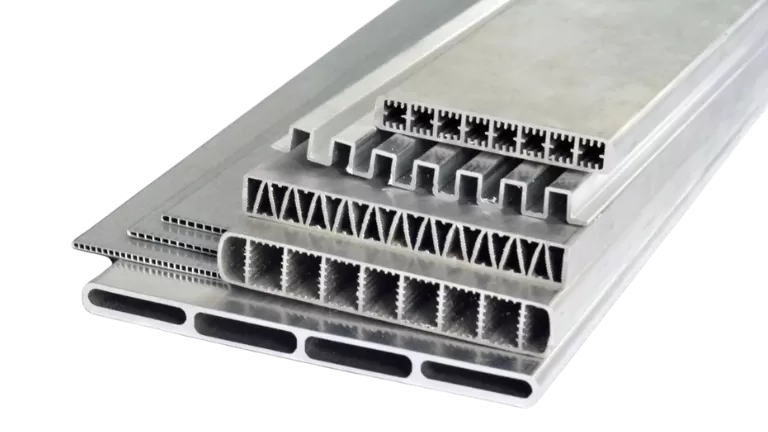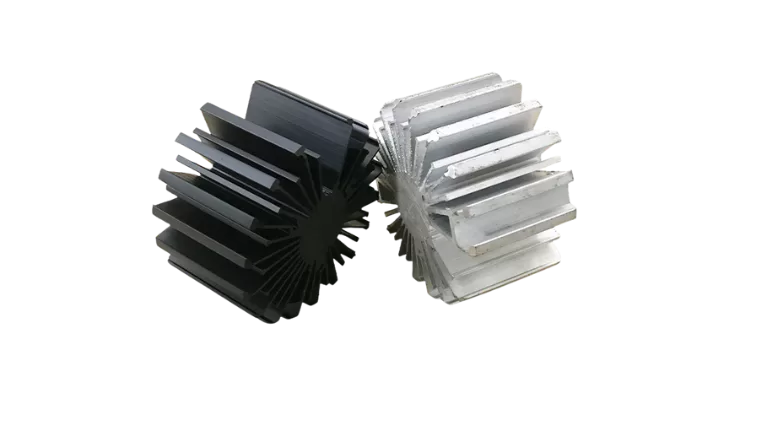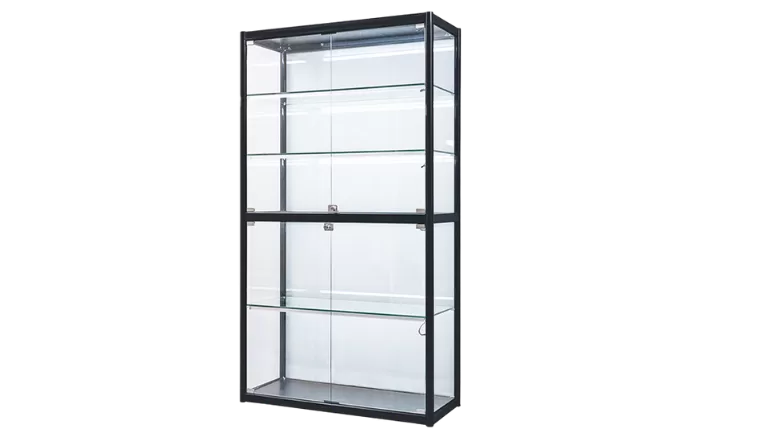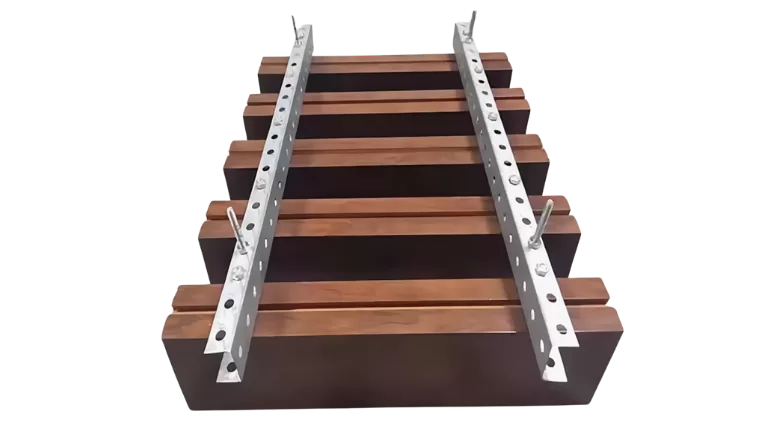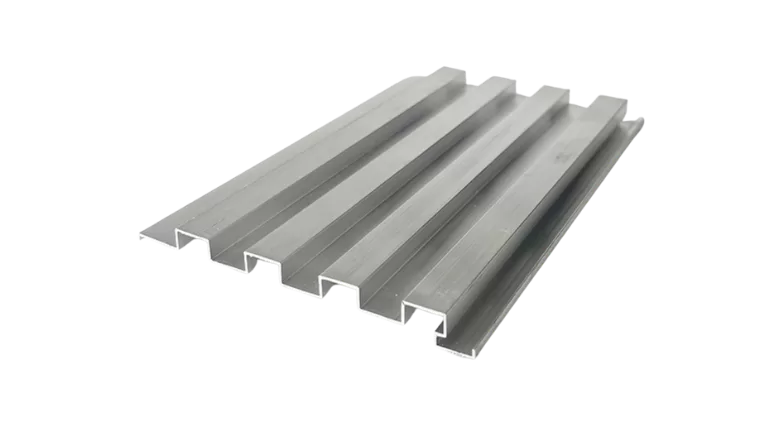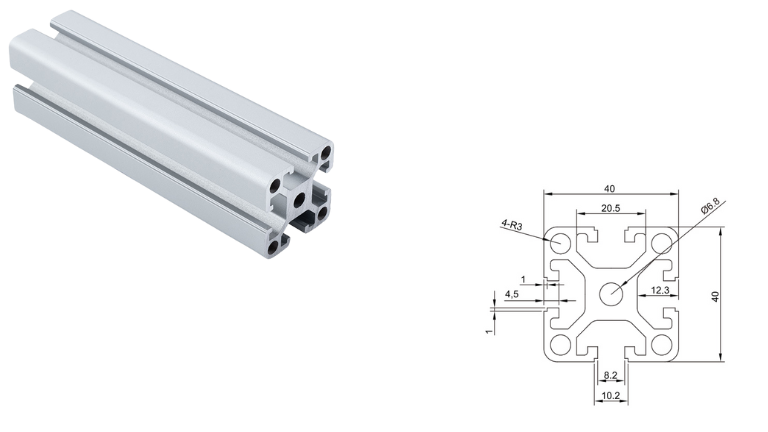Custom Accuracy Extruded Telescoping Aluminum Pipe
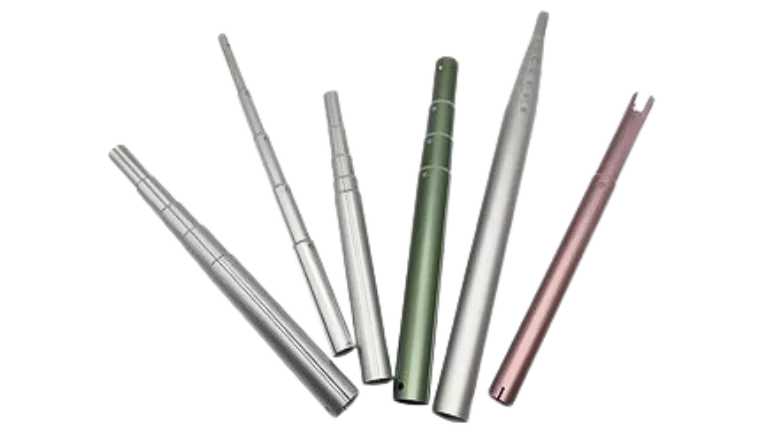
Telescoping aluminum pipes are versatile tubes made from lightweight, strong, and corrosion-resistant aluminum, making them a popular choice. Utilizing advanced extrusion techniques and anodized finishes, these pipes are not only high-performing but also visually appealing. Our range of telescoping aluminum pipe is perfect for applications such as camera booms, adjustable racks, flagpoles, and sensor equipment. They can be easily adjusted to different lengths, providing convenience and safety for users.
We at HTS-ALU, a custom aluminum profile extrusion factory based in China, offer a wide range of aluminum profiles with various surface treatments and machining services.
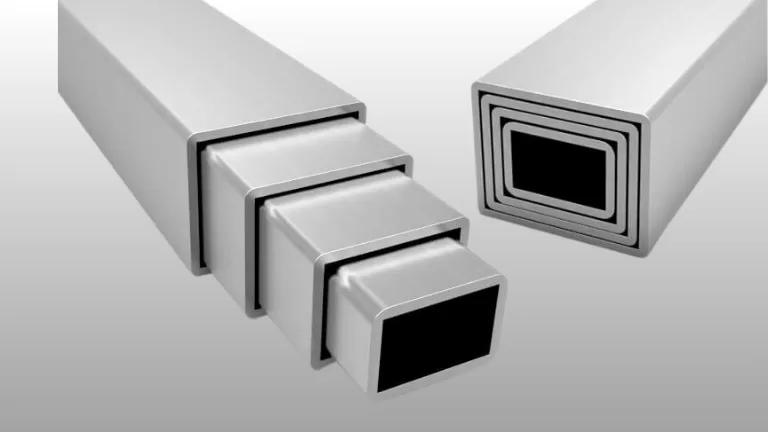
Telescoping Aluminum Square Pipe
Telescoping aluminum square pipe is suitable for applications such as safety railings, assembly line frameworks, and scaffolding. The square structure is known for its stability and strength, aiding in precise alignment and maintaining structural integrity, making it an ideal choice for projects requiring secure connections and effective weight support.
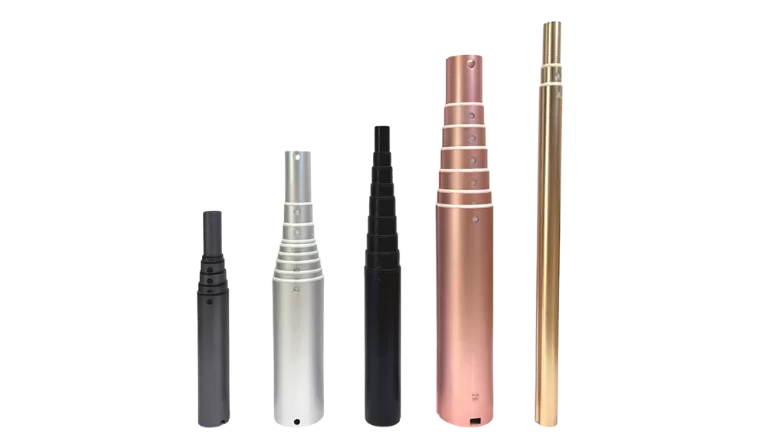
Telescoping Aluminum Round Pipe
Telescoping aluminum round pipe is ideal for outdoor antennas, camera poles, adjustable stands, and flagpoles. They are lightweight, corrosion-resistant, and stable with adjustable lengths. Their smooth surface and structural design allow for seamless telescoping, enhancing functionality.
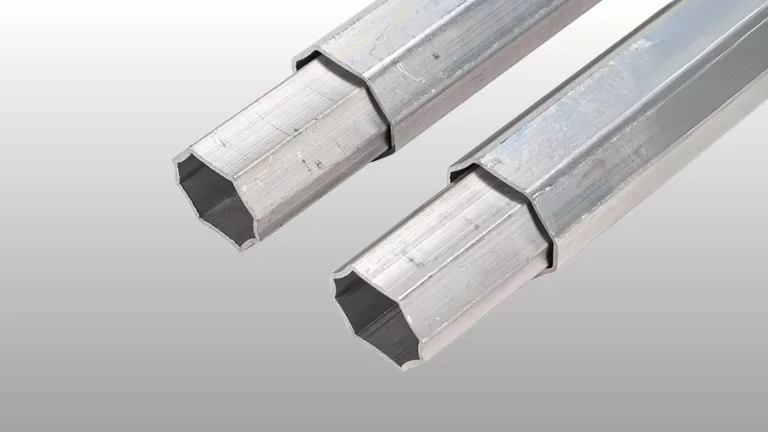
Custom-Shaped Telescoping Aluminum Pipe
Custom-shaped telescoping aluminum pipes offer a flexible solution for both everyday life and industrial use. They can be made in various shapes and sizes to meet specific needs. These aluminum tubes are lightweight and resistant to corrosion, making them suitable for different environments. They are commonly used in applications such as portable racks, TV stands, and mechanical designs. Additionally, their strength and stability ensure excellent performance when supporting weight, making them popular in the fields of engineering, construction, and manufacturing.

Adjustable Telescoping Aluminum Pipe
The adjustable telescoping aluminum pipe features a nested design with a locking mechanism. It has telescoping sections of varying diameters, secured by components like spring clips or threaded knobs for easy extension and fixation. Its key advantage is flexible length adjustment to suit industrial and everyday needs. Industrially, it's used in machinery maintenance and construction scaffolding; in daily life, it's applied in curtain rods and trekking poles. This product offers flexibility, portability, and multifunctionality.
Telescoping Aluminum Pipe Specifications
| Item | Specification |
|---|---|
| Material | Aluminum alloy (6061/6063) |
| Size | Outer Diameter: 3-250mm; Thickness: 0.3-50mm |
| Shape | Circular or Rectangular/Customized |
| Surface Treatment | Anodizing, Powder Coating, Sand Blasting, Polishing, Wooden Finish, etc. |
| Length | 10mm - 6000mm / Customized Length |
| Machining | Drilling, Tapping, Cutting, Milling, Bending, Custom Machining |
| Packaging | Standard Export Packaging or Customized Solutions |
The Applications of Telescoping Aluminum Pipes
From modern architecture to home projects, telescopicng aluminum pipes are virtually everywhere.
1. Construction Industry: Telescoping aluminum pipes are used for scaffolding, support frames, and temporary structures, widely applied in modern architecture.
2. Mechanical Engineering: As transmission components, they facilitate connections and movement within machinery, enhancing the efficiency of the equipment.
3. Home and DIY Projects: Telescoping aluminum pipes can be used to create movable shelves, drying racks, and more, catering to the needs of home improvement and self-help projects.
HTS-ALU offers a wide variety of telescoping aluminum pipes and custom products designed to meet specific needs. They are lightweight yet durable, capable of withstanding harsh environments, making them ideal for both indoor and outdoor use. Whether you’re looking to enhance the versatility of furniture or design specialized equipment, our telescoping aluminum pipes provide the strength and adaptability you need.
Surface Finishing for Extruded Telescoping Pipes
Extruded aluminum telescopic pipes can undergo various surface treatments to enhance durability and aesthetics. Non-exposed surfaces can be anodized for improved corrosion resistance, while exposed areas can be colored anodized in silver, black, gold, champagne, or antique bronze. For more color options, powder coating is available in hundreds of standard RAL colors. Additionally, electrophoretic coating provides a smooth surface finish, and wood grain effects can mimic natural wood, offering both durability and visual appeal. These options make them suitable for a wide range of applications.
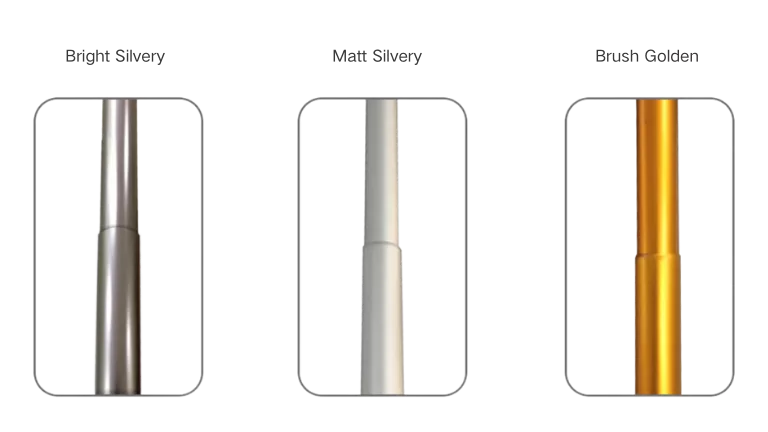
Telescoping Aluminum Pipes vs. Steel and Plastic
| Comparison Dimension | Telescoping Aluminum Pipe | Telescoping Steel Pipe | Telescoping Plastic Pipe |
|---|---|---|---|
| Weight & Portability | Light at 2.7g/cm³ (1/3 of steel), easy one-handed operation for outdoor use | Heavy at 7.85g/cm³, tiring to move | Lighter, but may lack rigidity and deform under load |
| Corrosion Resistance | Rusts easily, needs regular painting, high maintenance costs | Oxide film requires no maintenance, stable lifespan | Water-resistant but sensitive to solvents, ages over time |
| Scene Adaptability | -20℃ to 300℃ range, suitable for various applications, can be anodized | Good low-temperature but high heat conduction; may need coatings | Up to 120℃, softens at high temps, brittle in cold |
| Overall Cost | Higher than plastic, lower than specialty steel, lasts 5-10 years with good recycling value | Low initial cost but high maintenance, disposal causes pollution | Lowest initial cost, replace every 3-5 years; low-quality may leach harmful substances |
Telescoping Pipe Self-locking Mechanism
Telescoping aluminum pipes can be locked in place using various mechanisms, such as spring buttons, twist-locks, clamps, push pins, or external collars. These locking methods ensure secure adjustment and stable length during use, meeting different requirements for convenience and reliability.
Type 1: Aluminum Flip Lock Telescoping Pipe
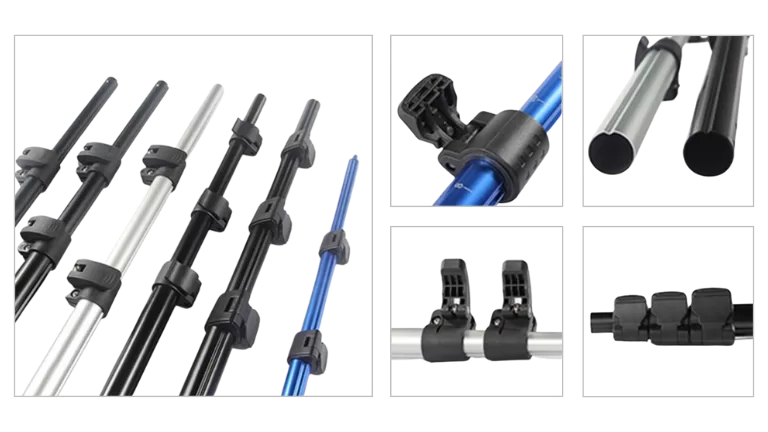
Type 2: Aluminum Twist Lock Telescoping Pipe
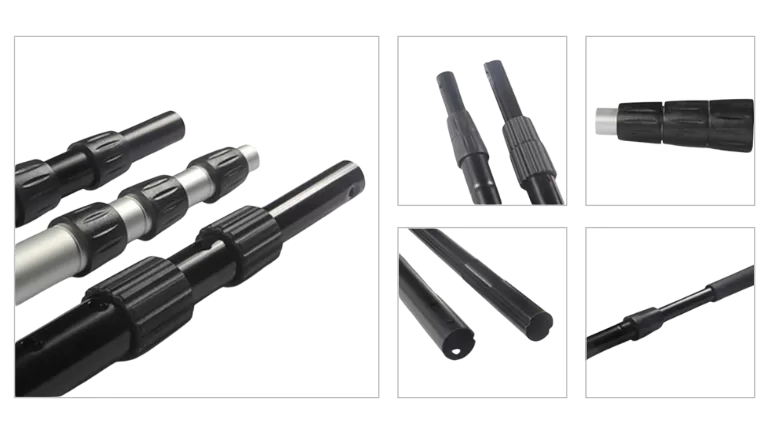
Type 3: Aluminum Spring Button Telescoping Pipe
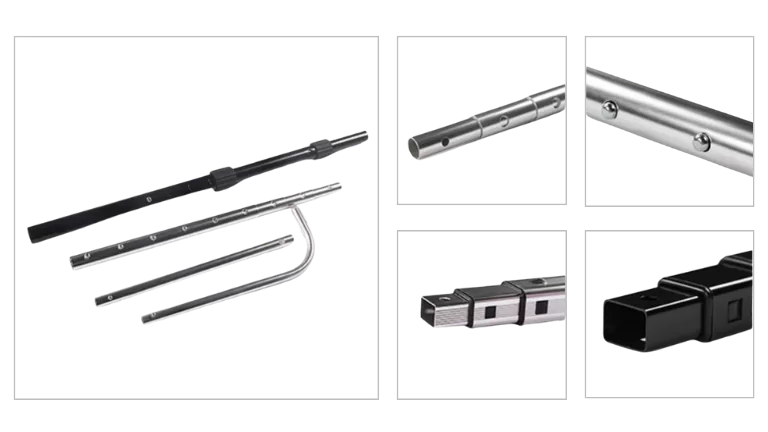
Type 4: Aluminum Straight Pull Telescoping Pipe
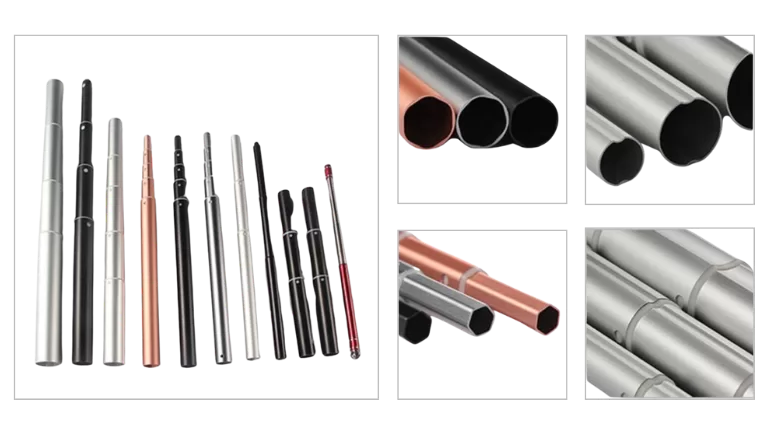
Characteristics of Telescoping Aluminum Pipe
1. Lightweight: Telescoping aluminum pipes have a density of just 2.7g/cm³, making them easy to operate with one hand. They are perfect for outdoor activities like hiking and supporting tents.
2. Corrosion Resistance: The natural aluminum oxide layer is resistant to moisture, salt, and mild acids, eliminating the need for rust treatment in humid environments like kitchens and bathrooms. This ensures a stable lifespan without worries.
3. Balanced Performance: With a temperature range from -20℃ to 300℃, these pipes remain tough in cold conditions and do not soften in high heat. They offer moderate strength and excellent flexibility, making them suitable for everyday loads like furniture legs and tripods.
4. High Cost-Effectiveness: Under normal use, aluminum pipes can last 5-10 years and are recyclable after disposal. They can also be easily customized in appearance to meet various needs.
5. Easy to Process: Aluminum pipes can be easily customized, including coloring and texturing, to meet various aesthetic requirements of different customers.These features make aluminum telescopic pipes widely applicable in various fields, such as construction, furniture, and sporting equipment.
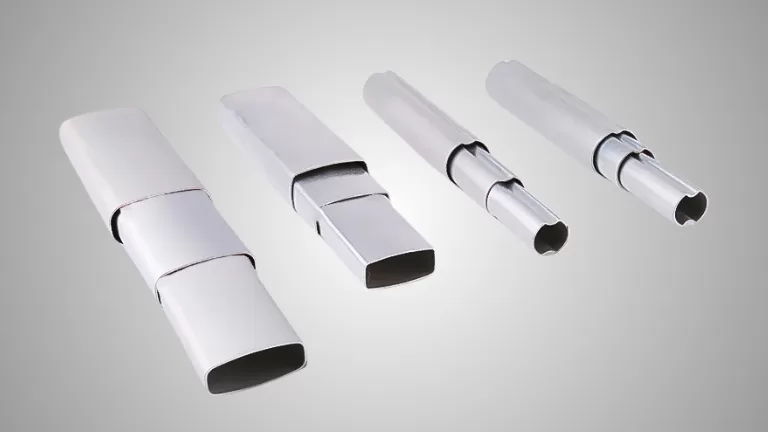
Telescoping Aluminum Pipe Processing
As a leading aluminum extrusion manufacturer based in China, we focus on producing high-quality telescoping aluminum pipes suitable for a variety of applications. Our expertise begins with the design and manufacture of custom molds, ensuring that each telescoping aluminum pipe has a unique structure—ranging from multi-section nesting to precision locking mechanisms—that meets the specific functional requirements of our clients. Utilizing advanced extrusion technology, we produce pipes with uniform wall thickness and seamless telescoping joints, ensuring smooth operation through thousands of extension and retraction cycles.

Our production site, equipped with over 40 advanced extrusion lines and a 6000-ton press, produces telescoping aluminum pipes of various sizes. These pipes offer flexible length adjustment for easy storage, high load-bearing capacity for engineering projects, and excellent corrosion resistance for outdoor use. With our versatile extrusion technology, we meet the specific needs of industries like construction and precision engineering.
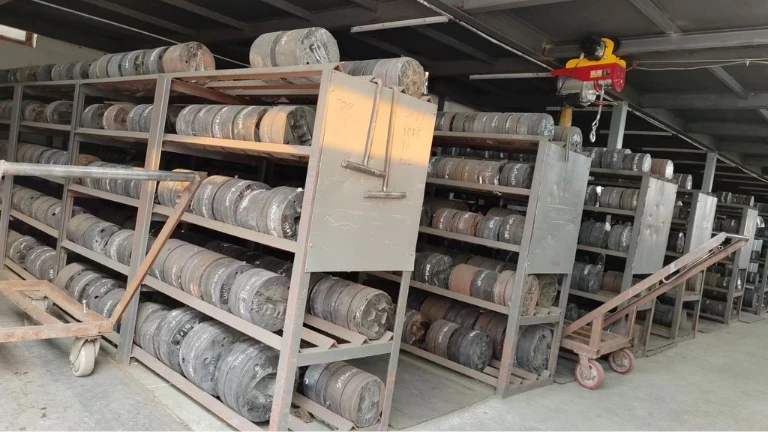
We have in – house expertise in designing and manufacturing extrusion molds for telescopic aluminum tubes, ensuring high – precision and efficient production. Our team collaborates closely with clients to create custom molds according to their drawings or samples, tailored to their specific needs. The mold production usually takes around 7 days, followed by sample submission for client approval before commencing mass production.
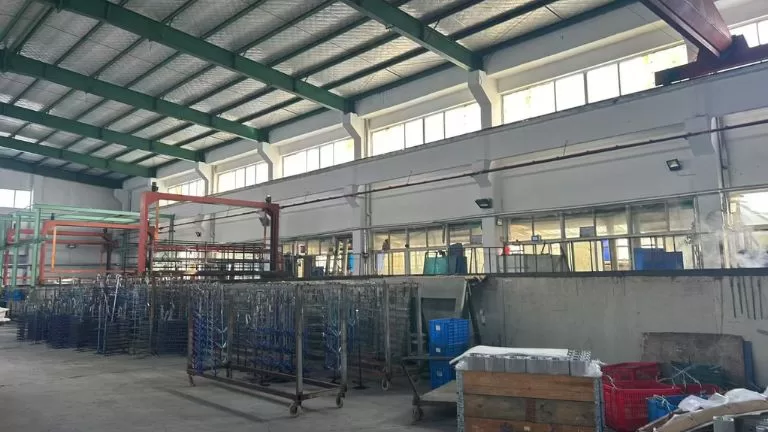
For superior durability and visual appeal, we offer various surface treatment solutions. These include anodizing for added corrosion resistance, powder coating for vibrant finishes, fluorocarbon coating for enhanced weather resistance, and wood grain transfer technology for elegant, natural-looking designs. These treatments are customizable to fit specific aesthetic and functional needs, ensuring that telescoping aluminum pipes not only perform well but also look exceptional.
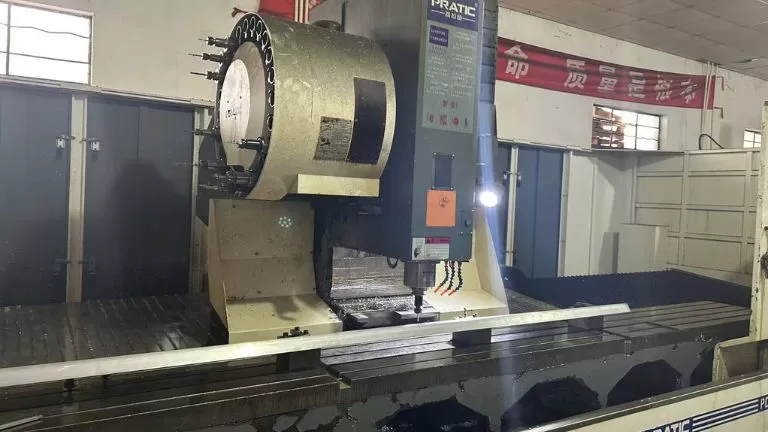
Custom Telescoping Aluminum Pipes from Us
At HTS NEW MATERIALS, we specialize in custom telescoping aluminum pipes tailored to your specific needs. With advanced production facilities and over 40 extrusion lines, we provide high-quality products for various industries, including outdoor equipment, furniture manufacturing, and industrial machinery.
Our custom tube services include:
- Unique Structural Design: We use our mold expertise to create telescoping pipes with multi-segment structures, locking mechanisms, and custom lengths.
- Comprehensive Surface Treatments: Enhance aesthetics and functionality with anodizing, powder coating, and polishing.
- Precision Fabrication: Ensure accurate dimensions and durability through cutting, threading, and machining.
- Customized Material Properties: Choose heat treatments like T5 and T6 to improve strength, flexibility, and resilience.
Partner with HTS NEW MATERIALS for innovative and reliable custom telescoping aluminum pipe solutions to ensure your project’s success.
RFQ of Extruded Tlescoping Aluminum Pipe
1. Aluminum Alloy 6061
- Characteristics:
- Excellent mechanical properties
- Good corrosion resistance
- Medium to high strength
- Weldable
- Benefits: Versatile and widely used in structural applications, offering good fatigue resistance and ease of fabrication.
2. Aluminum Alloy 6063
- Characteristics:
- Good corrosion resistance
- Excellent extrudability and finishing
- Lower strength compared to 6061
- Benefits: Ideal for architectural applications and situations requiring aesthetic appeal, such as window frames and custom shapes.
3. Aluminum Alloy 6082
- Characteristics:
- High strength and good corrosion resistance
- Good weldability
- Excellent machinability
- Benefits: Suitable for heavy-duty applications, including structural components in buildings and bridges.
4. Aluminum Alloy 5052
- Characteristics:
- Good corrosion resistance, especially in marine environments
- Excellent workability and weldability
- Moderate strength
- Benefits: Commonly used in applications where the material may be exposed to harsh conditions, such as fuel tanks and pressure vessels.
5. Aluminum Alloy 5005
- Characteristics:
- Good corrosion resistance
- Excellent anodizing properties
- Moderate strength
- Benefits: Often used for decorative applications and architectural features due to its surface finishing capabilities.
6. Aluminum Alloy 2024
- Characteristics:
- High strength-to-weight ratio
- Good fatigue resistance
- Less corrosion resistant compared to other alloys
- Benefits: Frequently used in aerospace applications and other high-stress environments, where strength is critical.
7. Aluminum Alloy 7075
- Characteristics:
- Very high strength
- Lower corrosion resistance
- Heat-treatable
- Benefits: Ideal for aerospace and military applications, where maximum strength is required.
1. Daily Cleaning: Wipe with a damp cloth; avoid using steel wool (to protect the anodized layer).
2. After Exposure to Extreme Environments: Rinse with a neutral cleaner after exposure to coastal or dusty environments, then dry and apply a thin layer of lubricant (silicone oil preferred).
3. Long-Term Storage: Collapse to the shortest state to avoid prolonged pressure from gravity, which can lead to metal fatigue.
The heat treatment of aluminum extrusions determines their mechanical properties, strength, and suitability for specific applications. Among the various heat treatment methods, T5, T6, and T66 are the most commonly used. Here’s an in-depth look:
| Heat Treatment State | Cooling Method | Strength | Key Features and Benefits | Applications |
|---|---|---|---|---|
| T5 | Air cooling (fan) | Moderate | Adequate strength, good dimensional stability, used for architectural purposes. | Windows, doors, curtain walls, building structures. |
| T6 | Water quenching (fast) | High | Higher strength and hardness, ideal for industrial and structural uses. | Automotive, aerospace, machinery, transport parts. |
| T66 | Water quenching (fast) | Very high | Optimized mechanical properties for higher strength and performance demands. | Automotive, rail transportation, high-end machinery. |
Other Heat Treatment States
- T4: Solution heat-treated and naturally aged. Used in applications requiring intermediate strength and enhanced formability.
- T7: Overaged for better stress-corrosion resistance, often used for aerospace and marine purposes.
- O (Annealed): Very soft condition suitable for extensive forming or bending requirements.
- F (As-Fabricated): No heat treatment applied, used in non-critical applications with low strength requirements.
. Anodizing (Oxidation)
- Common Colors:
Natural silver
Black
Champagne
Light bronze
Dark bronze
Gold
2. Electrophoresis Coating (E-Coating)
- Common Colors:
Black
Champagne
Light bronze
Dark bronze
Custom metallic colors
3. Powder Coating
- Colors:
Can match any color based on the RAL color chart.
Offers textures like matte, gloss, satin, and custom finishes.
4. PVDF Coating (Polyvinylidene Fluoride)
- Colors:
Also customizable using the RAL color chart.
High-end finishes with matte or glossy effects.
5. Wood Grain Transfer Printing
- Colors and Patterns:
Mimics various wood types (e.g., oak, walnut, teak, mahogany).
Custom patterns available based on provided samples.
6. Film Lamination
- Colors and Patterns:
Includes textures like marble, leather, and solid colors.
Custom finishes and patterns based on provided samples.
Pre-Treatment Options (Impact on Final Color)
- Brushing/Polishing: Produces smooth or reflective metallic surfaces.
- Sandblasting: Adds a rough, matte texture before the final surface treatment.
Mold fees are an essential part of the custom aluminum extrusion process. Since every order requires a uniquely designed mold tailored to specific requirements, these molds cannot be used for other products. Therefore, the mold fee is necessary and non-negotiable.
We require 100% upfront payment of the mold fee before mold development begins to ensure timely production. However, as a token of appreciation for your support, we offer a refund of the mold fee or equivalent discounts once the order reaches a certain production volume. Specific policies can be discussed based on your order volume and collaboration details.
Mold production typically takes 7 days. After the sample is confirmed, producing a full container load of 26 tons generally requires 14 days for extrusion alone. If surface treatment is required, an additional 3 days will be needed. For machining, extra time will be required depending on the complexity and volume of the machining work. The exact additional time for machining will be determined based on the specific processing requirements.
Aluminum profiles are naturally corrosion-resistant due to the formation of a thin, protective oxide layer when exposed to air or water. This oxide layer is stable and self-repairing, meaning that even if the surface is scratched or cut (such as at exposed ends or during processing), the aluminum will not rust or corrode like iron or steel. Instead, the exposed areas will quickly form a new oxide layer, providing continuous protection against further oxidation.
With proper design, installation, and maintenance, aluminum profiles can last for decades, even in challenging environments. For example, untreated aluminum can easily withstand 20-30 years in outdoor applications, while profiles with surface treatments like anodizing or powder coating can last even longer, often exceeding 50 years. This makes aluminum an excellent choice for applications where durability and long-term performance are essential.
The price of aluminum profiles consists of several components: raw material costs, extrusion processing fees, surface treatment fees, machining costs, and additional packaging fees. Among these, the cost of aluminum as a raw material tends to fluctuate frequently, while other fees remain relatively stable. Due to these fluctuations, our quotations are typically valid for 7 days.
Pricing can be structured in different ways depending on the product and requirements. It can be calculated by weight (e.g., cost per ton), by length (e.g., cost per meter), or by piece (e.g., cost per unit). For products involving extensive machining, such as heat sinks, pricing is generally calculated on a per-piece basis to accurately reflect the additional processing costs. This flexible pricing approach ensures the quote is tailored to the specific needs of the customer.
We can manufacture aluminum profiles in compliance with technical requirements that meet European standards (EN), American standards (ASTM/AA), or other standards as specified by the customer. Custom production is tailored to ensure that the profiles meet the specific standard requirements requested.
Our production equipment is designed for the metric system. If the drawings provided are in the imperial system, we will convert them into metric units for production to ensure accuracy.
It is important to note that while we can machine imperial-threaded holes for fasteners, if you require us to supply matching imperial fasteners, they may not always be available in stock. Custom orders for imperial fasteners typically require a large volume for production. Please consider this when planning your project.

